
Buffalo Kraut ~ You Simply Must Try
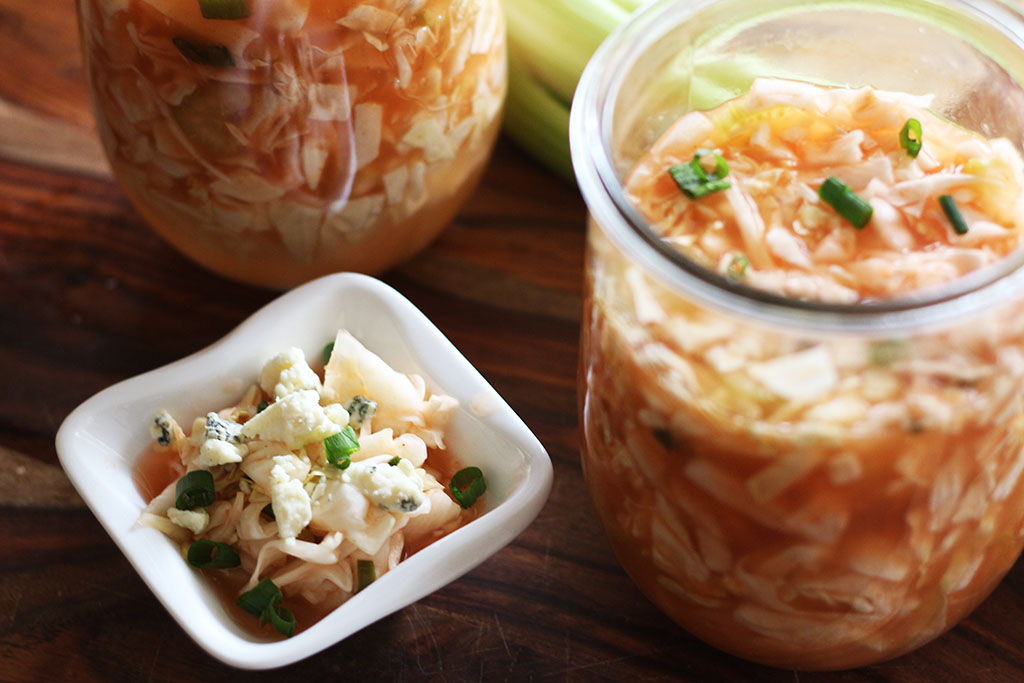
I’m always trying to find ways to help you eat more cultured foods. Taste is important as well as ease, and this recipe captures both. You will love this Buffalo Kraut created by my daughter Maci. It’s crazy good and just a spoonful is going to give you billions of probiotics. Your body loves to get probiotics from food. It speeds to the parts of the body where it’s needed and costs so much less than manufactured supplements. When you’re trying to change your health you need encouragement and this is what my mission is all about. I can inspire you to make cultured probiotic foods because I do it myself constantly. If you hang out with me enough, you’ll be making and eating cultured foods on a regular basis. Your body will start changing and you will take notice. You will discover the power of these foods and you will reach for them again and again.
A superstar in the probiotic world
My body keeps vigil for me. It lets me know when I’ve strayed too far outside what is best for me. This is what happens to you when you get well. You become accustomed to wellness and you feel so much better than you’ve ever felt that you never want to go back to being sick again. You pay attention to what made, and keeps, you well and you keep doing it. My life will always be filled with cultured foods because of what I now know. Certain bacteria strains in these foods have shown me their power and also helped me understand why and how they work on my behalf. In this recipe we have the powerful bacteria Lactobacillus Plantarum (L. Plantarum) which is a superstar in the probiotic world, but is also a transient bacteria, meaning it doesn’t last in the body permanently. You have to keep consuming it to get the benefits. So I have to keep finding different ways to enjoy and eat these probiotic foods and then you get the benefits of my never-ending quest to keep L. Plantarum in my life. Here are just a few ways that L. Plantarum can help you. You only need a few spoonfuls every few days and you’re good, although you can have more if you want.
Grow Your Own Probiotics For Health
Strengthens the good bacteria, kills harmful pathogensL. plantarum is the superstar bacteria in cultured vegetables. It is extremely hardy, survives stomach acid with ease, and can make the full trip from your mouth – to your intestines – to your colon – to colonize your gut in a powerful way. L. plantarum is a welcome guest that works mightily for you by fiercely attacking pathogenic (bad) bacteria in our bodies. It will strengthen your good bacteria by killing the bad guys, and then helps your own good bacteria grow stronger, and sets you up to be more resistant to future invasions of pathogens. It’s important to note that this is a transient bacteria which means it will only last a few days in the body so it’s important to have it often.
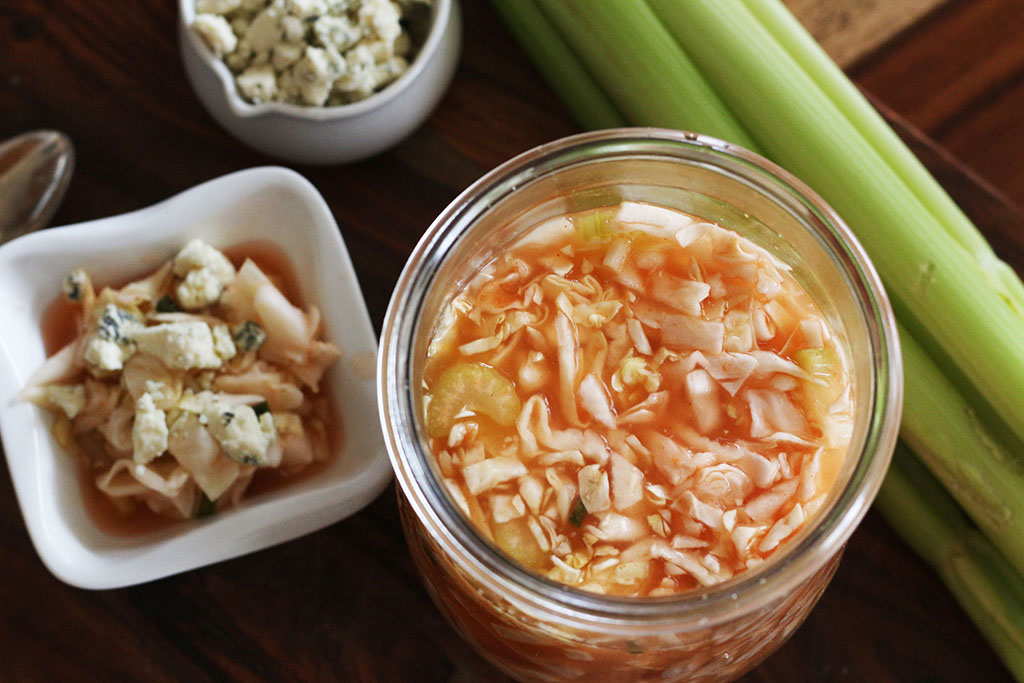
Removes pesticides
It’s exciting that microbes can help us by removing pesticides from our vegetables. It’s often a hardship for people to always buy organic, but the healthy bacteria L plantarum can remedy this. L. Plantarum helps remove pesticides from non-organic vegetables.1 The L. plantarum bacterial strains studied from fermented vegetables in kimchi were found to be capable of degrading four different organophosphorus insecticides by using them as a source of carbon and phosphorous.2
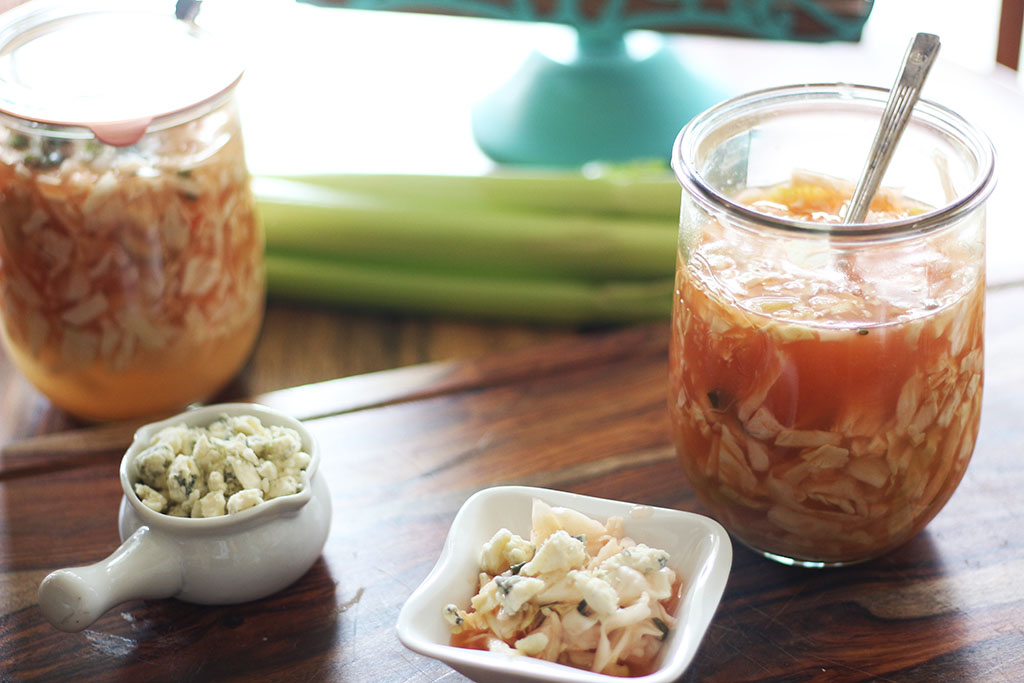
Stomach distress of any kind
L. plantarum is pretty powerful and can even knock out food poisoning 3, 4 (as I myself have witnessed). It has been studied and found successful in the inhibition of food poisoning and pathogenic bacteria, and it is being studied for use in improving the microbiological safety of foods. It’s also superior for any kind of stomach distress. I’ve seen this again and again and received so many emails from people telling me how effective it was in stopping vomiting, stomach cramps, and nausea with just a spoonful of the brine or vegetables. Try it and it will make you a believer, too. Nothing works better for stomach distress.

Cancer prevention
In 2005, a team of researchers in Poland and the United States studied two groups of young Polish women: one group had immigrated to the United States, and one had not. They found that the rate of breast cancer was three times higher for those in the U.S. than for those still living in Poland. Further studies concluded that the consumption of cultured sauerkraut was a possible factor in the differing rates of cancer. Women in Poland ate an average of 30 pounds of cultured sauerkraut each year, while the women in the U.S. ate less than 10 pounds per year. Why does this matter? Sauerkraut contains high levels of glucosinolates, which have been shown to have anticancer activity in laboratory research.
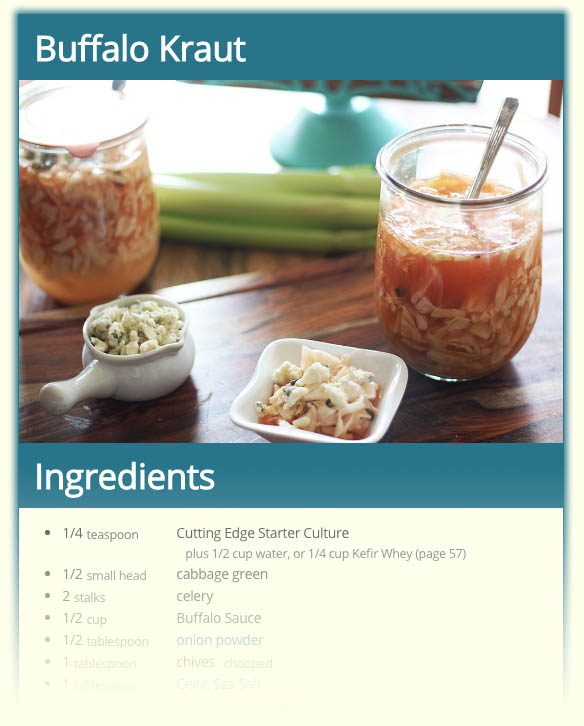
More Studies
Other studies have focused on estrogen metabolism and the enzymes in sauerkraut and its juices. A 2012 study conducted by biochemist Hanna Szaefer and her colleagues looked at the ability of the enzymes in cabbage and sauerkraut to change the expression of the P450 enzyme, which metabolizes estrogen but is also carcinogenic. Their research supported the idea that the consumption of sauerkraut was a beneficial food for the prevention of breast cancer in women.5
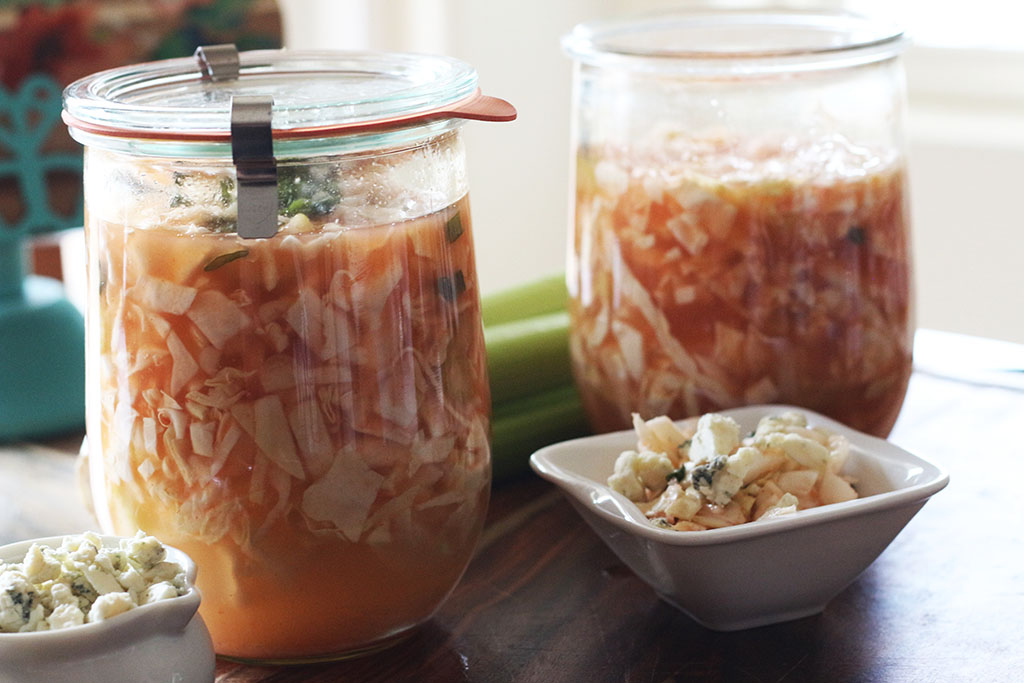
Buffalo Kraut
Ingredients
- 1/4 teaspoon Veggie Starter Culture - plus 1/2 cup water, or 1/4 cup Kefir Whey (page 57)
- 1/2 small head cabbage green
- 2 stalks celery
- 1/2 cup Buffalo Wing Sauce - you can use your favorite store bought version
- 1/2 tablespoon onion powder
- 1 tablespoon chives - chopped
- 1 tablespoon Celtic Sea Salt
- blue cheese crumbles
Every ingredient with a link was selected by me to make it easier for you. I may receive a small affiliate commission if you buy something through my links. Thank you! ❤️
Instructions
- If using the starter culture, stir together the culture and water. Let the mixture sit while you prepare the other ingredients—around 10 minutes.
- Remove and discard the outer leaves of the cabbage. Shred the cabbage and place it in a bowl. Then chop the celery into small pieces and mix it with the cabbage.
- Mix in the buffalo sauce, onion powder, salt and chives until well combined. Put the mixture in a jar.
- Add the culture and fill the container with filtered water, leaving 2 inches of headspace to let the vegetables bubble and expand as they ferment.
- Seal the container and let it sit on your kitchen counter, out of direct sunlight, for 6 days.
- Check the kraut every day to make sure it is fully submerged. If it has risen above the water, simply push it down so it is fully covered again. If white spots of yeast have formed on any unsubmerged kraut, do not worry. Remember, this isn’t harmful. Just scoop out the yeast and kraut it’s on and push the rest back under the water.
- When the kraut is done fermenting, place it in the refrigerator.
- Serve with a small amount of blue cheese crumbles.
Notes

References:
- http://articles.mercola.com/sites/articles/archive/2011/07/16/this-food-helps-you-to-detox-pesticides.aspx
- http://www.greenmedinfo.com/blog/nasty-pesticide-wheat-degraded-probiotic-used-culturing-food-1
- http://www.sciencedirect.com/science/article/pii/S0956713507001703
- http://agris.fao.org/agris-search/search.do?recordID=KR2010002575
- H. Szaefer et al., “Modulation of CYP1A1, CYP1A2 and CYP1B1 Expression by Cabbage Juices and Indoles in Human Breast Cell Lines,” Nutrition and Cancer 64, no. 6 (August 2012): 879–88: abstract at www.ncbi.nlm.nih.gov/pubmed/22716309.
Are you on the list?
Sign up today and I'll send you my free Getting Started Guide!
Each week I'll send you updates, tips, recipes, and more! You might even be a winner of my weekly giveaway! (starter cultures, memberships, and more!)
Come be a part of my cultured food family!


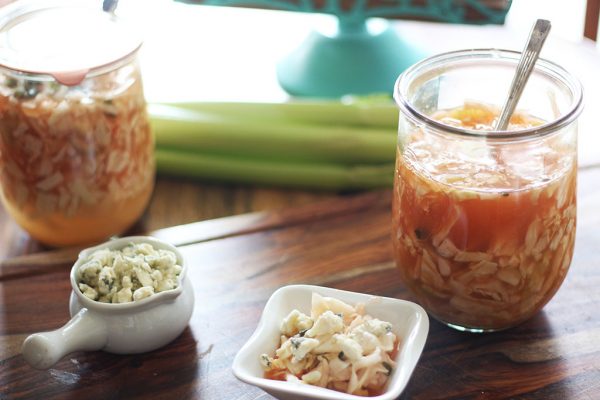


 I'm sorry, but I do not ship my products outside of the United States.
I'm sorry, but I do not ship my products outside of the United States.